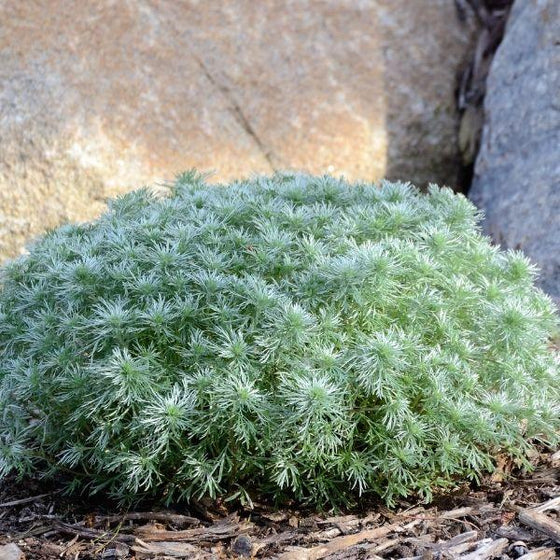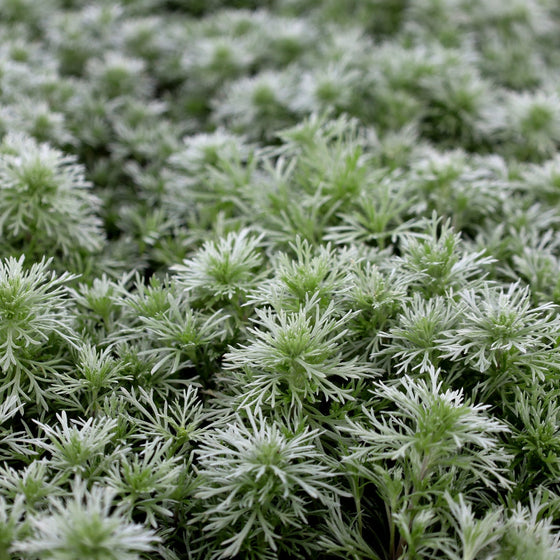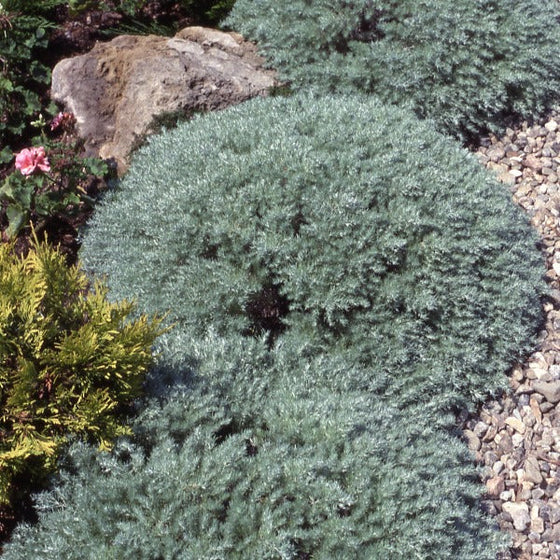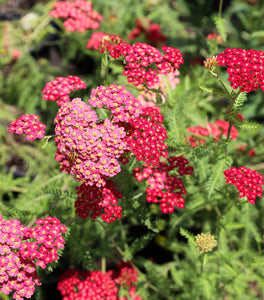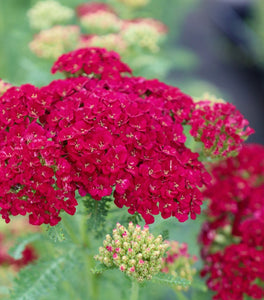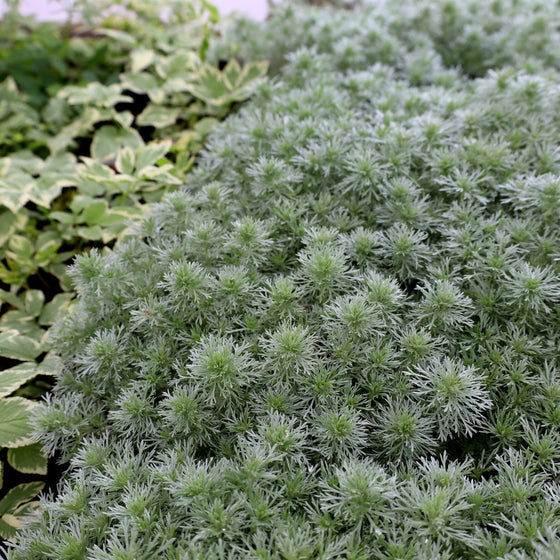
Images Depict Mature Plants
Silver Mound Artemisia Plants for Sale Online
Artemisia Silver Mound has aromatic foliage that is finely textured with silvery, silky pubescence. An excellent accent for borders, herb, and cottage gardens.
When planted en masse will provide an excellent contrast to plants with green foliage or vibrant flowers. Artemesia thrives in cool summer areas. Artemisia Silver Mound is one of the most popular silver foliage plants sold today.
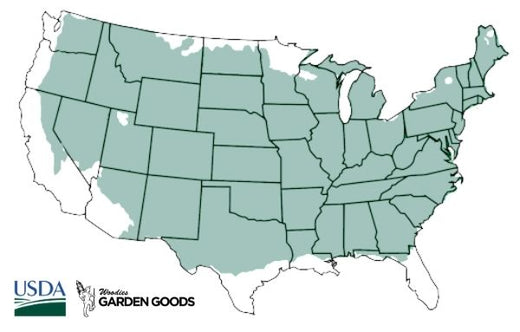
| Hardiness Zone: | 4-8 |
|---|---|
| Mature Height: | 10 to 14 Inches |
| Mature Width: | 12 to 14 Inches |
| Sunlight: | Full sun |
| Habit: | Upright, clump forming |
| Foliage: | Silvery-green delicate foliage |
| Soil Condition: | Average well-draining soil |
| Water Requirements: | Water well until established |
| Uses: | Extremely attractive when used as a focal point in the mixed border, mass planting. |
How to Care for Silver Mound Artemisia
After purchasing your Artemisia Silver Mound, be sure to read our recommended care instructions to ensure a happy and healthy plant for years to come.
How do I plant my Silver Mound Artemisia Perennial?
We suggest when planting your newly purchased Silver Mound Artemisia plants that you dig a hole twice as wide as the root system but not deeper. The most common cause of plant death after transplanting is planting the new plant to deep. A good rule is that you should still be able to see the soil the plant was grown in after back-filling the hole. Depending on the quality of your existing soil you may need to add a locally sourced compost or topsoil to the back-fill soil. We do not recommend using straight topsoil or compost as a back-fill soil because more times than not these products will retain entirely to much moisture and will cause the root system to rot. Adding compost or topsoil will help the young feeder roots to spread through the loose, nutrient rich soil, much easier than if you used solely the existing soil which more times than not will be hard and compacted.
What are the watering requirements for Artemisia Silver Mound?
After back filling and lightly compacting the 50/50 mix of existing soil and compost give the Silver Mound Artemisia a good deep watering. This is not to be rushed. Most of the water you put on the plant at first will run away from the plant until the soil is soaked. A general rule of thumb is to count to 5 for every one gallon of pot size. For example a one gallon pot would be watered until you count to 5 a three gallon pot would be 15 and so on. Check the plant daily for the first week or so and then every other day there after. Water using the counting method for the first few weeks.
How do you fertilize Artemisia Silver Mound?
Feeding your plants is probably the single most forgotten part of growing healthy long lasting plants. We recommend feeding your Artemisia Silver Mound in the very early spring and again in mid summer after all new growth has hardened off and it begins to set flower buds. Bio-tone starter fertilizer is the best product to use at the time of planting. Apply an early spring fertilizer with a product such as Espoma Plant-tone at the recommended rate this will give the plant a boost of nitrogen potash that will be needed for healthy foliage and stem growth. Espoma products are easy to use, just sprinkle around the base of the plant and water it in. Be careful with products such as miracle-grow as these products can burn newly planted plants when not used at the recommended rates. Slow-release fertilizer can help prevent rapid soft growth that is vulnerable to diseases and insects.
How do you mulch Artemisia Silver Mound?
We highly recommend that you mulch your Artemisia Silver Mound with either a ground hardwood mulch or a ground cypress mulch depending on your local availability. Any type of mulch will do but cypress or hardwood mulch will be of a higher quality and provide better nutrition overall as they breakdown. Mulching helps to keep weeds away which will compete with your new investment for water and nutrients. A 2 to 3 inch layer of mulch is sufficient but remember to take care not to cover any part of the stem of the plant with mulch. Its better to leave a one inch gap of space between the mulch and the stem or base of the plant.

